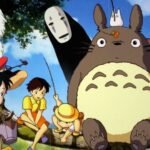The Role of Music in Japanese Animation: Iconic Soundtracks and Composers
Music plays a pivotal role in Japanese animation, enhancing the emotional depth, atmosphere, and narrative impact of the stories told. From the stirring orchestral scores that underscore epic battles to the hauntingly beautiful melodies that linger long after the credits roll, the soundtracks of anime have a unique ability to resonate with audiences. This post explores the crucial role of music in Japanese animation, highlighting some of the most iconic soundtracks and the legendary composers who brought them to life.
1. Setting the Tone: The Emotional Power of Music in Anime
In Japanese animation, music is far more than just background noise; it’s a vital component that sets the tone and enhances the viewer’s emotional experience. Whether it’s the melancholic piano pieces that underscore a character’s loneliness or the adrenaline-pumping rock tracks that accompany intense action scenes, the music in anime helps convey the emotions and themes of the story.
One of the most powerful examples of this is the use of music in Neon Genesis Evangelion (1995). Composer Shiro Sagisu’s haunting score, which ranges from orchestral pieces to jazz-influenced tracks, perfectly captures the series’ complex emotional landscape. The contrast between the upbeat opening theme “A Cruel Angel’s Thesis” and the somber, reflective pieces that play during key moments exemplifies how music can mirror and amplify the emotional journey of the characters.

2. Iconic Anime Soundtracks: Music That Defines Generations
Some anime soundtracks have become so iconic that they are instantly recognizable, even to those who may not be familiar with the series. These soundtracks have left an indelible mark on pop culture, influencing not just anime fans, but music lovers around the world.
Cowboy Bebop (1998) is a prime example of this. The soundtrack, composed by Yoko Kanno and performed by The Seatbelts, is a masterful blend of jazz, blues, and rock. The opening theme, “Tank!”, is an energetic jazz piece that sets the stage for the series’ stylish, genre-bending narrative. Kanno’s ability to blend different musical genres into a cohesive and memorable soundtrack has made Cowboy Bebop one of the most celebrated anime soundtracks of all time.
Another iconic soundtrack is Joe Hisaishi’s work for Studio Ghibli films, particularly Spirited Away (2001) and My Neighbor Totoro (1988). Hisaishi’s music is characterized by its sweeping, orchestral melodies that evoke a sense of wonder and nostalgia. His compositions are deeply intertwined with the magical worlds created by director Hayao Miyazaki, adding an extra layer of emotional resonance to the films.
3. Legendary Composers: The Maestros Behind the Music
The impact of anime soundtracks is largely due to the talents of the composers who craft these unforgettable pieces. Several composers have become legends in the anime industry, known for their unique styles and ability to elevate the stories they accompany.
Joe Hisaishi is perhaps the most famous of all anime composers, known for his long-standing collaboration with Studio Ghibli. Hisaishi’s music is often described as both ethereal and deeply emotional, with a particular ability to capture the essence of Miyazaki’s films. His scores for Spirited Away, Princess Mononoke (1997), and Howl’s Moving Castle (2004) are just a few examples of his work that have become beloved by fans worldwide.
Yoko Kanno is another towering figure in the world of anime music. Her eclectic style, which often blends different musical genres, has made her a standout composer in the industry. In addition to her work on Cowboy Bebop, Kanno has composed memorable scores for series like Macross Plus (1994), The Vision of Escaflowne (1996), and Ghost in the Shell: Stand Alone Complex (2002). Kanno’s ability to match her music to the tone and style of each series has earned her a reputation as one of the most versatile composers in the business.
Shiro Sagisu, known for his work on Neon Genesis Evangelion, has also left a significant mark on the industry. His compositions often feature a mix of classical and contemporary elements, creating a sound that is both epic and emotionally charged. Sagisu’s ability to convey complex emotions through music is particularly evident in his work on the Evangelion series, where his score enhances the psychological depth and intensity of the narrative.
4. The Impact of Anime Music on Popular Culture
The influence of anime music extends far beyond the realm of animation. Iconic anime soundtracks have inspired countless covers, remixes, and performances by musicians around the world. In addition, many anime theme songs have become hits on music charts in Japan and internationally, further solidifying the impact of anime music on popular culture.
Anime conventions often feature performances of popular anime songs, and orchestral concerts dedicated to anime music have become increasingly popular, allowing fans to experience their favorite soundtracks in a new and immersive way. The global reach of anime has also led to collaborations between Japanese composers and international artists, further blending musical styles and cultures.
5. The Future of Music in Japanese Animation
As anime continues to evolve, so too does its music. The future of anime music promises to bring new styles, technologies, and collaborations that will continue to push the boundaries of what is possible in animation. With the rise of digital platforms and global streaming services, anime music is more accessible than ever, allowing new generations of fans to discover and appreciate the incredible soundtracks that have defined the medium.
Emerging composers are also bringing fresh perspectives to anime music, experimenting with new genres and techniques to create soundscapes that are both innovative and deeply connected to the storytelling tradition of anime. As the industry grows, the role of music in Japanese animation will undoubtedly continue to be a vital and transformative element.
Conclusion
The role of music in Japanese animation cannot be overstated. It is an integral part of the storytelling process, capable of elevating a scene from good to unforgettable. The work of legendary composers like Joe Hisaishi, Yoko Kanno, and Shiro Sagisu has shaped the emotional and cultural landscape of anime, leaving a legacy that continues to inspire and resonate with audiences worldwide. As anime evolves, music will remain a powerful force, driving the narratives and emotions that make Japanese animation one of the most beloved forms of entertainment in the world.



